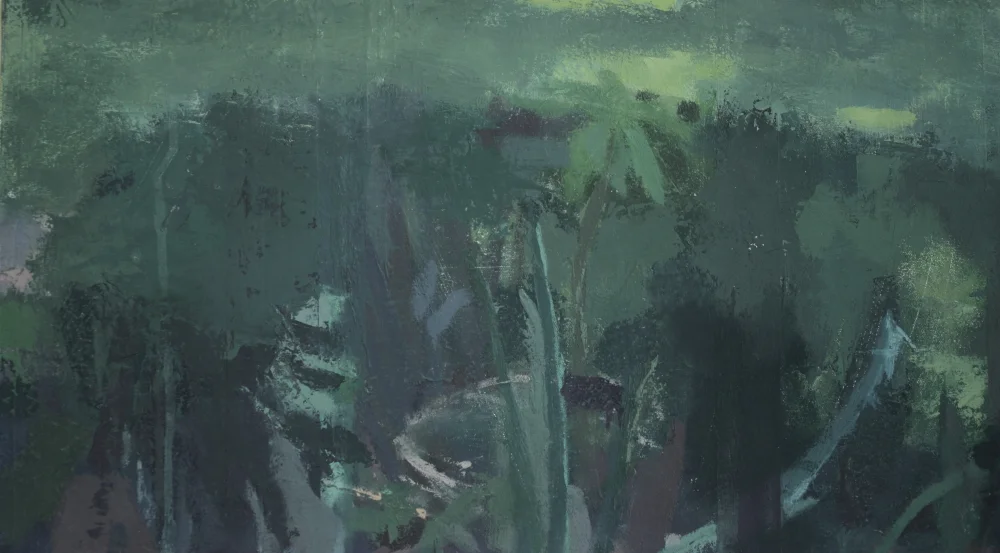This picture happened on a summer day with bright sun. I set up my easel next my car on the sidewalk and enjoyed the breeze blowing through the valley. My dog curled up in the shade and I started to enter that abstract world of shapes. The sidewalk became stripes and the trees became straight poles fading into the distance. The houses far away were bright jewels peaking out behind the trees.
Painter Susan Jane Walp recently had a show at the Tibor de Nagy gallery in NYC. This is an excerpt from the description of her show in which she talks about “the abstract world” and Hawthorne’s color spot theory:
Walp’s approach to painting was deeply influenced by the artist Lennart Anderson whom she met when he was teaching at a Boston University summer program at Tanglewood in 1968, and she again studied with him at Brooklyn College in the 1970s. Anderson taught a method of painting pioneered by the American portrait and genre painter Charles Hawthorne. Hawthorne’s technique was known as the “color spot” method, where a painting was begun by laying out areas of color, and then using the relationships between the colors as a springboard. Anderson learned this method from Hawthorne’s student Edwin Dickinson, Anderson then passed it on to Walp. In speaking of Anderson’s influence Walp states: “For lack of a better word (and one he might not approve of), it was an abstract world. Entering it was entering a realm of infinite possibility, and from the very beginning I loved dwelling in it.” Thus a tradition begun in the 19th century continues, through Walp's distinctive body of work, well into the 21st century.
I got to study with Susan Jane Walp in Italy in 2017 with the JSS in Civita program. She helped raise my awareness of the abstract world and challenged me to become more sensitive to it.
Painting on the sidewalk I looked at each stripe of light as its own particular color tied to all the colors in the picture’s own specific light envelope. Though the stripes on the sidewalk looked nearly identical, I found that each one had a slightly different character. I believe that it is this sort of character that takes a picture from a painting of “things” to a painting of a reality that feels specific and familiar.
“Sidewalk” began as a much larger painting. I found that this picture photographed here was the driving force of the image and the only necessary piece. I often crop or add on to my pictures in order to get the point. I find the useless information doesn’t need to be there. As Shakespeare says:
“Therefore, since brevity is the soul of wit,
And tediousness the limbs and outward flourishes,
I will be brief.” -Hamlet

















